Memoirs of an Independent Auto Repair Shop Owner: World's Most Notorious Automotive Technologies, Bin One
Not wanting to let the proverbial grass grow under my feet, I figured now was as good a time as any to proceed with the “rant” threatened of while in the midst of my “Of Honda’s and Miracles” piece. While I was contemplating said rant, it also seemed like a good time to make a quasi-collection of additional rage against other automotive technologies that, over the years, I’ve found to be considerably more than a useless nuisance.
In the interests of clarity and brevity, I limited the scope to designs currently being used by virtually ALL auto manufacturers. I may, in the future, if overcome by intense feelings of either abstract nostalgia or acute vindictiveness, single out certain “rogue” designs from the past and present. I will leave all of the Why’s and Wherefores to Conspiracy Theorists. Now…TO THE BIN!
The Drum Brake
Yes, of course I learned to use the tools effectively, really mastering my service technique; and I believe I have been able to get the most of whatever this design has to offer on any vehicle passing through my repair bay. I even went so far as to drive my restored 1967 Ram-Air Stick Shifted Pontiac Firebird 400 on the freeways of Los Angeles, and, on top of that, on a couple of spirited excursions up U.S. Highway 1 to the Monterey Historic car weekend—with these spiteful mechanisms attached to ALL FOUR wheels, no less!
The act of stopping that all-go-and-no-slow semIROCket was definitely one of the white-knuckle experiences of my life! At some point, though, the two-to-three seconds of waffley and (at best) only moderate stopping power they provided before fading into oblivion, no longer bore repeating. I installed a complete power front disc system scavenged from a ’72 Nova (back when they could be found at the local Pick-Ure-Part), and never had to look back at what I’d just run over!
I never did install a rear disc setup on that car, because the rear suspension wasn’t really up to the speeds I’d have been able to maintain with the additional “anchor” they would have provided. I don’t think the CHP would have been “up”, either! Could have been fun for a while, though.
So, at any rate, it would have to be said that I have given drum brakes a fair shake—maybe even going above and beyond the call of duty.
I have concluded that—purely from a PERFORMANCE standpoint—while a four-wheel drum brake setup is completely unacceptable (eventually, all auto manufacturers had to admit this), a front disc/rear drum setup did, in fact work adequately (within civilian boundaries) on my ‘bird—and, more importantly, for many of my customers. When it comes to braking systems, though, I’d really much prefer “great” over “adequate” for my use, since there are those times when only great truly gets the job done.
From a MAINTAINANCE standpoint, however, the rear drum system is ultimately inadequate, as it requires a lot more time and attention than a rear disc system.
How about so-called self-adjusters that generally DON’T (enough), even when all else is cleaned, lubed, set and functioning correctly? Or the required frequent drum removal to clean out trapped lining “dust”. And God help you if you have to remove a drum that has experienced “metal-to-metal” contact for some time (As luck will usually have it, the self-adjusters will, in this case, work well enough to extensively advance the process, effectively trapping the drum around the “imbedded” brake shoes. To make matters worse (if Murphy’s Law is in full effect) there will be no adjuster access ports in the backing plate, so the shoes can’t be retracted; meaning that Brute Force and Ignorance, or BFI, will have to be resorted to in order to remove the drum!).
In the end, when all is repaired and fully functional, you’re still left with an inefficient, complex and maintenance-intensive contraption. Egregious, undoubtedly!
The Interference Engine
This reaction is not limited to Overhead Cam belt-driven systems, but it happens more frequently with them.
The Mother of All Interference Engine Damage Cases has to be any belt-driven “Blue Propeller” creation. To say that these engines could be “damaged” with the advent of belt failure would be like saying you could be “injured” if your parachute fails to deploy while engaging in Skydiving!
The irresistible force of the crankshaft’s rotating mass behind the connecting rods and pistons, meets the immovable object in the form of valves and rocker arms made of some incredibly hard stuff, culminating in what is virtually an EXPLOSION within the engine. The resulting damage has to be seen to be believed: BROKEN pistons, BENT connecting rods, SCORED cylinder walls, BROKEN cylinder heads (from extreme lateral impact on rocker shafts, transmitted through the valvetrain)—almost a complete annihilation of the engine!
The fact that all of this mechanical carnage can be avoided if engineers just opt to incorporate a “freewheeling” engine design certainly gives me pause for contemplation.
I’ve seen engines of all stripes, from the economy-oriented to the high-performance sporting this consumer and technician-friendly design; so it doesn’t in any way appear to be purpose-exclusive.
All things considered, the interference design does indeed seem to have a reason to be… which is what qualifies it for entry into World’s Most Notorious Automotive Technologies.
Bin One being investigated, please return next week for Bin Two.
Phil Coconis is the owner of a West Coast independent auto repair shop.
More by Phil Coconis
Latest Car Reviews
Read moreLatest Product Reviews
Read moreRecent Comments
- SCE to AUX It's over, and over the last decade or so Henrik Fisker has left two eras of foolish customers driving paper weights.
- Kwik_Shift_Pro4X Always a good sign. 🤕 I would like to see their pitch on Shark's Tank/Dragon's Den
- Buickman I was called crazy after predicting the sale of GMAC.#canthurtme
- 3-On-The-Tree Another observation during my time as a firefighter EMT was that seatbelts and helmets do save lives and reduce injury. And its always the other person getting hurt.
- 3-On-The-Tree Jeff, Matt Posky, When my bike came out in 1999 it was the fastest production motorcycle in the world, 150 HP 197 top speed, 9.57 quarter mile Hayabusa peregrine falcon etc. This led to controversy and calls for high-speed motorcycles to be banned in order to avoid increasingly fast bikes from driving on public roads. This led to a mutual decision nicknamed the “ gentleman’s agreement” to limit bikes to 186mph, ending the production bike speed contest for all bikes 2000 and upward. Honestly once your over a buck 20 it’s all a blur. Most super cars can do over or close to 200mpg, I know at least on paper my 09 C6 corvette LS3 tops out at 190mph.



















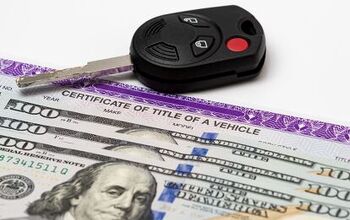
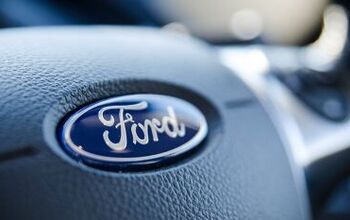
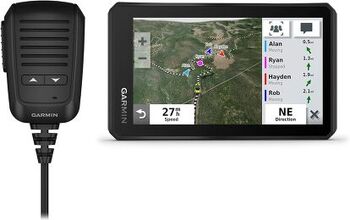
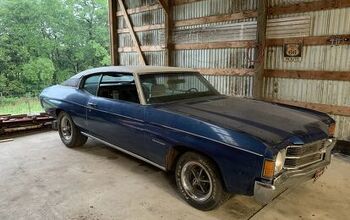
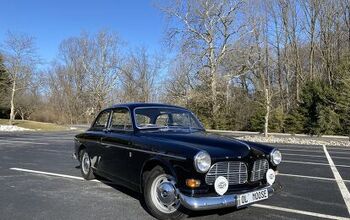






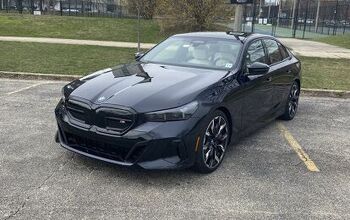

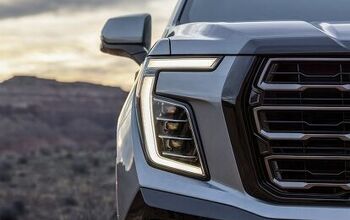
Comments
Join the conversation
Recently replaced my wife's older VW Passat with a new one. Diesel or 2.0 direct injection gas turbo? Went with gasoline because it uses a metal timing chain (huzzah!) versus the diesel which uses a timing belt. 100% of the theoretical fuel diesel fuel savings are more than lost due to the added scheduled maintenance! Just this week I paid to replace my year 2000 Audi A4 1.8t quattro's timing belt, the second one in 12 years. That, leaking injectors, replacing all the air injection tubing which got cooked, new clutch and flywheel (single, not Audi dual-mass), plugs, filters, didn't need a water pump (whew), the second dipstick (plastic fittings gets destroyed by engine heat) came to $4,500. YIKES! The clutch and flywheel alone was $1,500 in parts and labor due to the quattro system. Though undoubtedly expensive, I figure I'm still ahead because I love driving it, and replacing it with a new car I'd like as much would be super costly. And a used replacement? Well, I know how well I've taken care of this one. As long as it doesn't blow its engine or have a big collision/get stolen I expect it should be fun to drive another 5 years or more. Next up: bodywork and wheel refinishing.
Little car drums don't seem to bad. Try changing 1990 f250 drums. Huge 12 inch and 3 inches wide. They also have these horrible shoe hold down snail springs that you need a super human just to get in. Still don't know how i got them in. They are also covered by the e brake lever. Plus the drums way a TON. I did put everything new on them and the stop dang good. Self adjusters seem to work for now. But, it takes me HOURS to get the things, off and fix, and you bleed, and swear... ALOT. This is the reason i am never buying a car again with drums anywhere. I can do a disk job in 20 minutes on a 3/4 ton and most of that is taking the wheels off. The internal drums behind the disk on newer trucks looks so much easier in comparison.